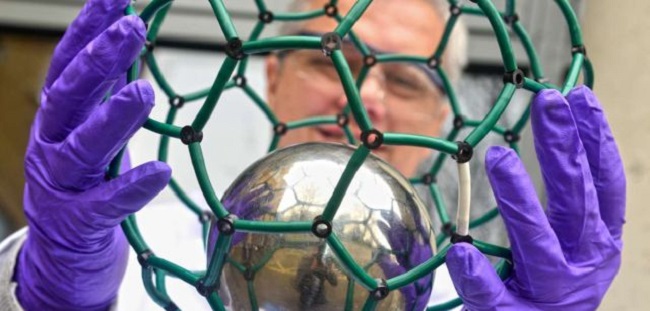
Designer Carbon Materials, Oxford scientific startup, recently sold its first 200 micrograms of endohedral fullerenes on the basis of the nitrogen atoms for 33 400 USD is about $ 167 million per gram. Such a transaction makes this material the second most valuable material on Earth, second only to the antimatter (48 trillion dollars per gram).
Endohedral fullerene cage of carbon atoms with a nitrogen atom inside, which can be used for very small and very precise atomic clocks which are currently the size of a room.
“Imagine a miniature atomic clock that you could carry in your smartphone, says company founder Kyriakos Porfyrakis. — For the mobile sphere this would be the next revolution.”
One of the problems that could be solved miniature atomic clock, this positioning of self-driving cars. With conventional GPS navigation, works with a precision of several meters, it is difficult to accurately monitor and control the vehicle. Add atomic clocks and get an accuracy of 1 mm.
Tiny atomic clocks, however, does not threaten in the near future. Porfyrakis told that the first batch of material was sold to a consortium of researchers from the UK and the USA, including the University of Oxford who “is working on the production of the atomic clock on the basis of this material”.
“It will take several years to complete the research project, he adds. — If this is the final product it will be tiny enough to fit in portable devices.”
Buckyballs
First discovered in 1985, endohedral fullerenes are created by enclosing the atom (not necessarily nitrogen) in a cage of 60 carbon atoms. In these cells, also known as buckminsterfullerene (in honor of Buckminster fuller, architect and inventor of Tensegrity), the carbon atoms are aligned in a football ball (hence their second name — “Bucky balls”). These molecular cages have superior physical and electronic properties compared to “normal”. In the case of N@C60 (the process is studied on the basis of the nitrogen atom), his “superpowers” is a long lifetime of the electron spin.
Explore one of the most expensive materials on Earth very expensive. In 2013, the University of Oxford together with two partners received a grant of 1.5 million pounds on the development of production methods on the “increase the production of endohedral fullerenes to gram scale.”
“I hope that in the next two to three years we will be able to achieve,” says Porfiris, who heads a research group of the University. Currently Designer Carbon Materials can produce “up to a gram a day” is cheaper and less pure material in which carbon will be more empty cells without a nitrogen atom inside.
“As for the pure material, we can do up to 50 milligrams, and it’d take weeks to take a shit,” he says. While Oxford is the only company engaged in commercial production of N@C60. But there are also the process is studied on the basis of metal that are easier to produce and purify; they are being addressed by several companies around the world.
Being in a sense a monopolist market, Porfyrakis is optimistic about the commercial prospects of your startup. “We are a new company, just starting to sell the product, he says. But after the first sale we have many requests from all over the world, so the demand seems to be rising”.
